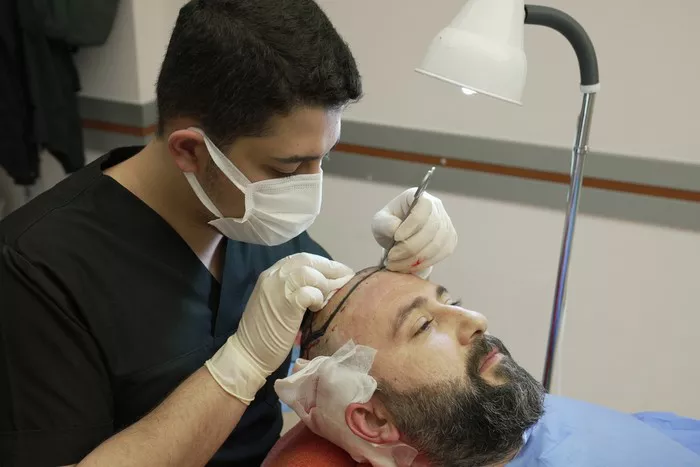Understanding Hair Transplantation:
Hair transplant surgery is a popular and effective solution for individuals dealing with hair loss. This comprehensive guide walks you through the intricacies of the procedure, shedding light on what occurs during and after surgery.
1. Preoperative Consultation and Planning
Assessment of Hair Loss:
Preoperative Evaluation: Before the surgery, a thorough consultation is conducted to evaluate the extent of hair loss, discuss patient expectations, and determine the best approach. Factors like donor hair availability and the desired outcome are considered.
Customized Treatment Plan:
Personalized Approach: A customized treatment plan is devised, taking into account the patient’s unique hair characteristics and the chosen transplant technique—common methods include Follicular Unit Transplantation (FUT) and Follicular Unit Extraction (FUE).
2. Donor Hair Harvesting
FUT Technique:
Strip Harvesting (FUT): In FUT, a strip of scalp containing healthy hair follicles is surgically removed from the donor area (usually the back of the head). The incision is then sutured, leaving a linear scar that is easily concealed.
FUE Technique:
Individual Follicle Extraction (FUE): FUE involves harvesting individual hair follicles directly from the donor area using a specialized punch tool. This technique leaves tiny, scattered scars, and no linear scar is formed.
3. Recipient Site Creation
Artistry in Transplanting:
Recipient Site Incisions: Skilled surgeons create tiny incisions in the recipient area, ensuring the natural angle, direction, and density of hair growth. The artistry lies in mimicking the natural hair pattern for a seamless result.
4. Graft Placement
Precision in Transplanting:
Graft Implantation: Individual or strip-harvested follicular units are meticulously placed into the recipient sites. Surgeons pay close attention to the density, distribution, and overall aesthetics to achieve a natural-looking outcome.
5. Postoperative Care and Recovery
Immediate Aftercare:
Bandaging and Care: After the procedure, the donor area may be bandaged, and specific postoperative care instructions are provided. Patients are typically allowed to return home the same day.
Initial Recovery Period:
First Few Days: Initial recovery involves mild discomfort, swelling, and scabbing in both the donor and recipient areas. Patients are advised to follow postoperative care instructions diligently.
Hair Shedding and Regrowth:
Temporary Shedding: It’s common for transplanted hair to shed within the first few weeks. This shedding is temporary, and new hair growth typically begins within a few months.
Frequently Asked Questions
Q1: Is a hair transplant a one-time procedure?
Single or Multiple Sessions: The number of sessions depends on the extent of hair loss and the desired outcome. Some individuals achieve satisfactory results with a single session, while others may opt for additional sessions for greater density.
Q2: How long does it take to see the final results?
Results Timeline: Final results vary, but noticeable hair growth typically begins within three to six months. Full results may take up to a year as the transplanted hair matures and thickens.
Q3: Are there any side effects or risks associated with hair transplantation?
Potential Risks: While considered safe, risks may include infection, scarring, or an unnatural appearance if not performed by a skilled surgeon. Adhering to postoperative care instructions minimizes these risks.
Q4: Can anyone undergo a hair transplant?
Candidate Eligibility: Generally, good candidates have stable donor areas and realistic expectations. Medical conditions, current medications, and overall health are factors considered during the consultation.
Q5: Does a hair transplant hurt?
Pain Management: Patients may experience some discomfort during and after the surgery. Surgeons use local anesthesia to minimize pain during the procedure, and pain management medications are prescribed for postoperative discomfort.
Q6: How long is the recovery period?
Recovery Duration: Initial recovery typically spans a few days, with most individuals resuming normal activities within a week. Full recovery, including the complete growth of transplanted hair, takes several months.
Q7: Can transplanted hair be treated like natural hair?
Normal Hair Care: Once fully healed, transplanted hair can be treated like natural hair. It can be cut, styled, and maintained using regular hair care practices.
Q8: Can a hair transplant fix receding hairlines?
Addressing Receding Hairlines: Yes, a hair transplant can effectively address receding hairlines by transplanting hair to the areas of recession, creating a more balanced and youthful appearance.

